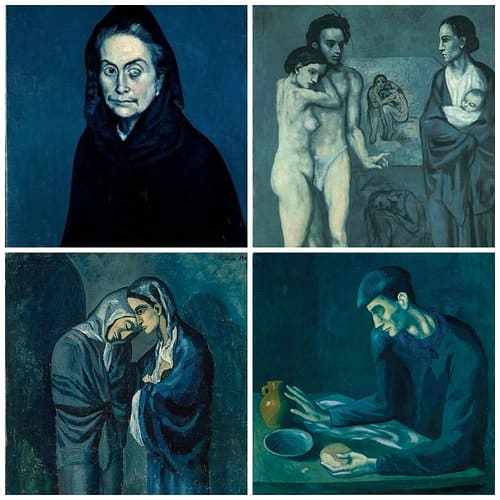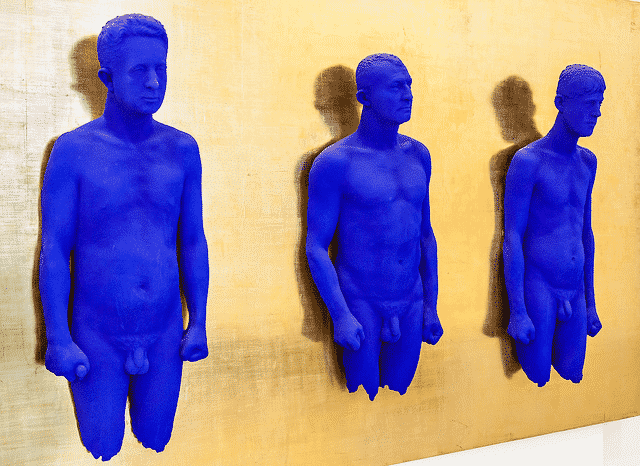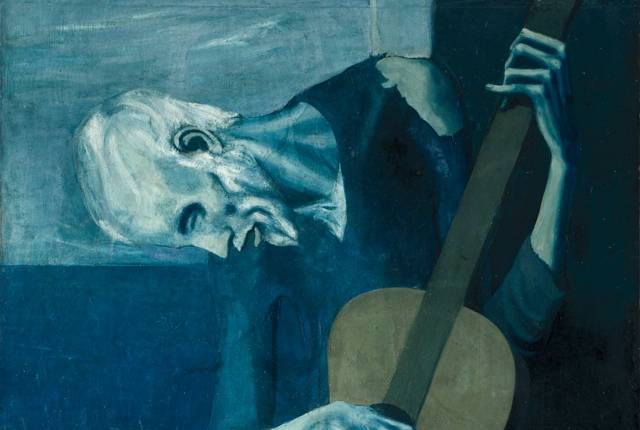“Blue is the only color which maintains its own character in all its tones…it will always stay blue; whereas yellow is blackened in its shades, and fades away when lightened; red when darkened becomes brown, and diluted with white is no longer red, but another color – pink.” – Raoul Dufy, French Fauvist Painter (1877 – 1953)
Color has the power to change our moods and states of mind. And throughout time and history, the color Blue’s spectrum has had a profound presence in art. In fact, Pablo Picasso dedicated 1901 to 1904 to monochromatic paintings in shades of blue and blue-green, only occasionally using another color. The works he produced during this time were later defined as The Blue Period.

The Blue Period would begin as Picasso’s depression worsened, and his use of blue began to dominate in his paintings. In his early 20s living and working in poverty in Paris, young Catalan artist’s depression can be rooted to the suicide of his friend Carlos Casagemas who shot himself earlier in 1901. Not only was Picasso painting with hues of blue that mirrored his anguished mood but his subjects included solitary figures of society’s poor and outcast.
His paintings during The Blue Period were cheerless and uninspiring as reported by leading critics of that time, yet it became most sought-after works later on. Picasso’s artistic development is vastly diverse and remains as the most popular and prolific artist of 20th-century. Accordingly, the Blue Period signifies an important turning point in artistic and historical context.
The History of Blue
Blue was a pigment that was in short supply historically, making it sought-after for artists and bankable for the merchants. The Egyptians invented Egyptian Blue around 2200 B.C. by combining limestone and sand with either azurite or malachite which was heated and crushed up to later be turned into paint or glaze.
And Ultramarine otherwise known as “true blue” was made from the semi-precious gemstone lapis lazuli which could only be found in Afghanistan back then making it such a commodity that the price of it rivaled gold in Venice. The color was so in-demand and so expensive that it was reserved for only the most prominent art subjects such as the Virgin Mary and could only be afforded by the church.
In 1824, Ultramarine would be so coveted that France’s Societé d’Encouragement would offer a 6,000-franc reward to anyone who could invent the synthetic version of “true blue.” The French committee would award a Frenchman despite inventing it within weeks of a German professor. The synthetic “true blue” would go on to be named “French Ultramarine.”
Other notable shades of blue in history are Indigo, Prussian Blue, International Klein Blue, and YInMn blue.

In 1957, French artist Yves Klein would work exclusively with the color blue. He once said, “Blue has no dimensions. It is beyond dimensions.” Using French Ultramarine, he would spray paint everyday objects, canvasses, and casts of ancient sculptures. And in 1960, he would create a matte version of ultramarine and patented his method pigment production which he named IKB or International Klein Blue.
Fifty Shades of Blue
What is fascinating is that throughout the centuries, shades of blue have been synthetically invented to meet demand while others have been discovered entirely by accident.
Blue in its many shades and hues can inspire emotions that are wildly contradictory. Certain blues can evoke loneliness and sadness while other shades of blue inspire serenity and spirituality.
Its different cultural meanings throughout history are also interesting. Blue in China represents immortality while it is the color of mourning in Iran. In Ancient Rome and France, blue is linked to rank and royalty. The Jewish faith, Hinduism, and Ancient Egyptians all associate blue with their gods, spirituality, and the divine.
Today, blue is one of the most prevalent colors. In its many shades, hues, and tones, blue continues to captivate people. Certain shades of blue stimulate feelings of trust, confidence, and security. Perhaps this is why blue is the most commonly used color for brand logos.
Creatives have used the psychology of color to evoke emotions and send subliminal messages for years. Do you believe that the color blue in its different variations has the power to suggest negativity and stir positivity?



![[Left] Kusama with her piece Dots Obsession, 2012, via AWARE, [Right] Yayoi Kusama (Courtesy Whitney Museum of American Art) | Source: thecollector.com](https://www.artdex.com/wp-content/uploads/2024/04/Left-Kusama-with-her-piece-Dots-Obsession-2012-via-AWARE-Right-Yayoi-Kusama-Courtesy-Whitney-Museum-of-American-Art-Source-thecollector.com--300x172.png)



